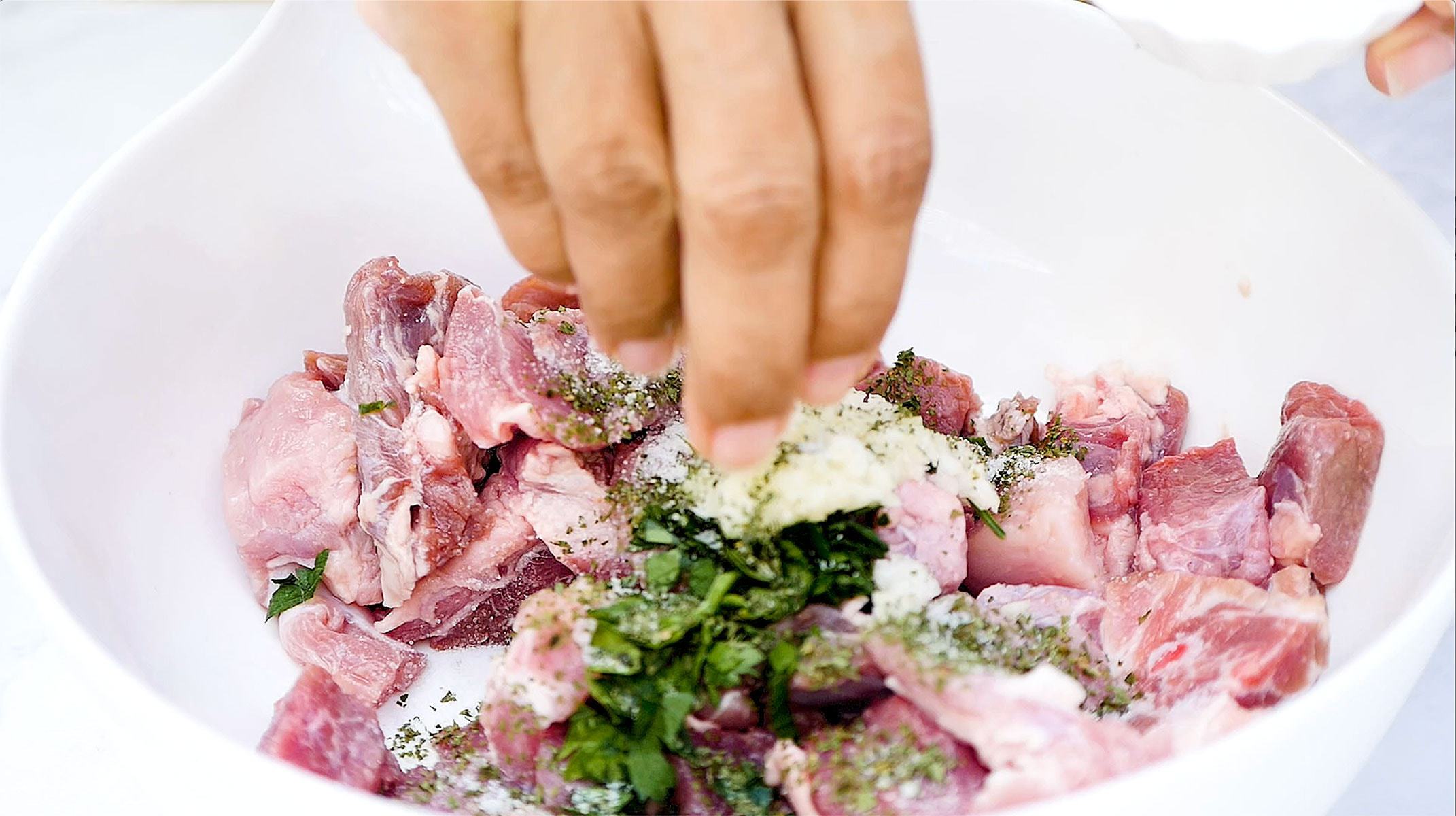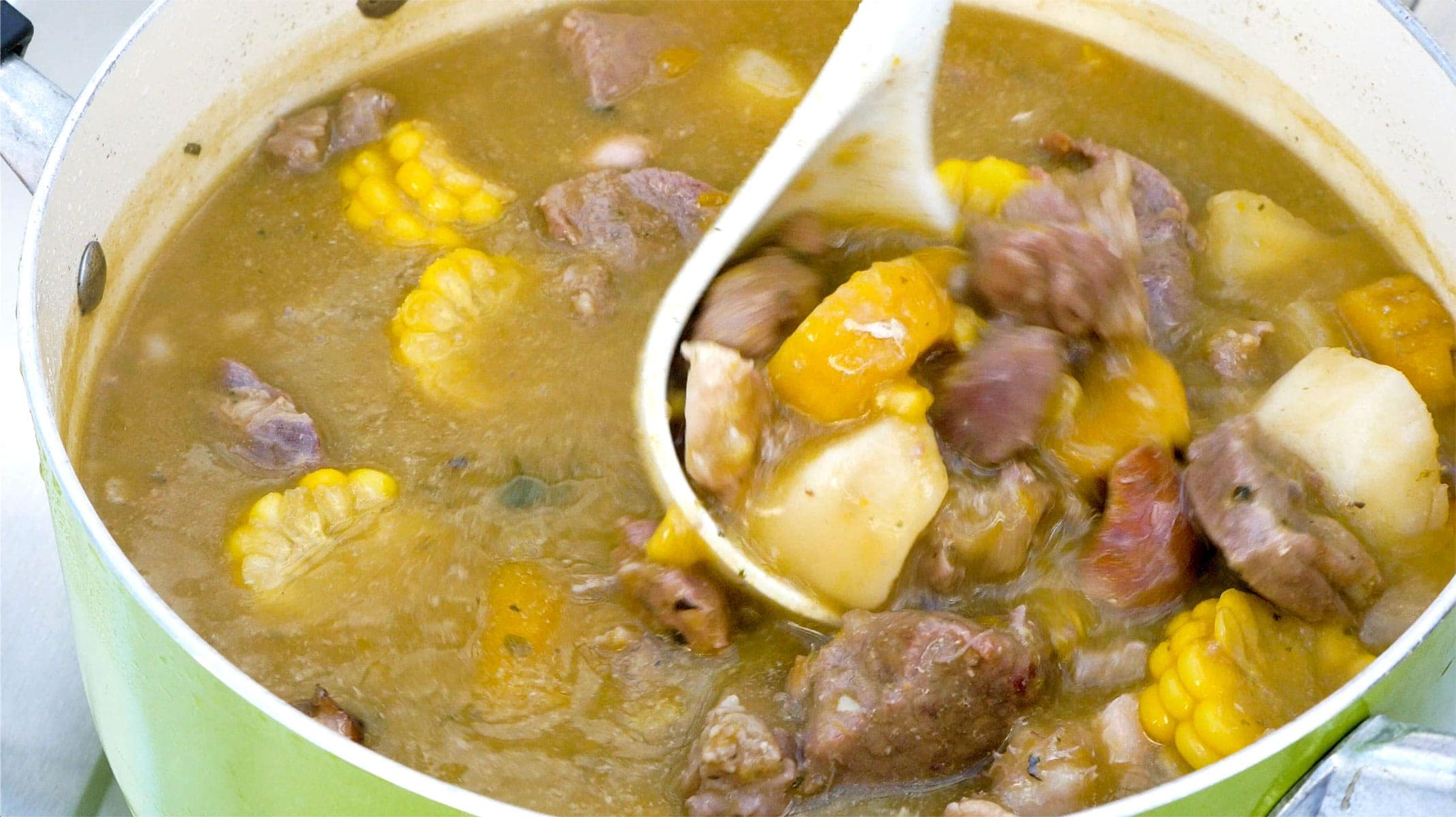What is Sancocho?
If you’re not from the Dominican Republic you must be asking yourself right now, “What in the world is sancocho?” And if you’re a Dominican you have been eating this dish your entire life. Sancocho is a traditional dish from Dominican Republic that consists of a 7 meat stew (today it is made with less meat) served with rice and sliced avocados on the side. Because all my family lives in Dominican Republic my whole life my family always went to visit for the holidays and the holidays were not complete unless we ate sancocho. Within the Dominican Republic several different versions of this seven meat stew exist, and the beautiful thing about this dish is that every family puts their own twist on it. However, some rules seem to be almost universal: never add potatoes, noodles, or tomato sauce. Mainly served at dinnertime or special occasions, the Dominicans’ version of sancocho remains a national favorite and has a lot of cultural significance. Growing up and visiting Dominican Republic I remember having a big Christmas dinner with rice, pork, casseroles, and other traditional dishes, however, my grandma always prepared sancocho two hours after dinner and everyone still ate it even though they were full. This dish has sentimental value and is the essence of dominican culture. Sancocho also showcases many vegetables and roots local to the country, such as yuca, auyama, yautia, and most importantly plantain. My great grandma showed my grandma how to make it, my grandma showed my mother how to make it, and I hope someday I learn to make it as well. I asked my mom, who was born and raised in Dominican Republic however now lives in Texas, how sancocho makes her feel and she replied “El sancocho para mi me hace sentir motivo de que esta lloviendo y hace frio, que estoy cercas de mi pais, y tambien me hace sentir que estoy de fiesta con mi familia.”

Dominican Sancocho https://www.chefzeecooks.com/wp-content/uploads/2018/03/Sancocho_web.jpg
Brief History of Sancocho
Sancocho is said to have originated in the Spanish Canary Islands as a fish-stew soup, and the Canary Islanders who immigrated to Latin America brought sancocho to the island with them. As the recipe began to travel to different parts of Latin America such as Colombia and Ecuador, it eventually reached the Dominican Republic.
Recipe time!
Ingredients:
- 1 lb beef for stews flank, chuck, or round [0.45 kg] cut into small pieces
- 1 lb goat meat [0.45 kg] cut into small pieces
- 1 lb pork for stews belly, or chump end [0.45 kg] cut into small pieces
- Juice of two limes
- 1 tsp cilantro or parsley chopped
- ½ tsp oregano powdered
- 1 tsp garlic crushed
- 1½ tsp salt
- 4 tbsp oil
- 1 lb chicken [0.45 kg] cut into small pieces
- 1 lb pork ribs [0.45 kg] cut into small pieces
- 1 lb bones from a smoked ham [0.45 kg] cut into small pieces
- 1 lb pork sausage longaniza [0.45 kg] cut into small pieces
- 2 corn cobs cut into 1/2-inch slices, optional
- ½ lb West Indian pumpkin (auyama) cut into 1-inch pieces [0.23 kg]
- 3 unripe plantains peeled, 2 cut into 1-inch pieces, one left whole
- ½ lb yam (ñame) cut into 1-inch pieces [0.23 kg]
- ½ lb malanga (yautia) cut into 1-inch pieces [0.23 kg]
- ½ lb cassava (yuca) cut into 1-inch pieces [0.23 kg]

Meat being seasoned

Stew cooking
Instructions:
- Seasoning the meat: Place the beef, pork, and goat meat in a large bowl and season with lime juice, cilantro (or parsley), oregano, garlic, and a teaspoon of salt. Make sure the meat marinates for at least half an hour.
- Cooking the meat: In a large pot, heat the oil over high heat, add the seasoned meats, and stir (be careful with hot oil splattering). Cook stirring until browned. Add the remaining meats and corn, and cook stirring for a couple of minutes.
- Adding water: Lower heat to medium and pour 1/2 gallon of water. Simmer until it breaks the boil.
- Adding vegetables: Once the water breaks the boils, add auyama, chopped plantain, and root vegetables (ñame, yautía, yuca).
- Cooking vegetables: Simmer covered over low heat until the last ingredients you added are cooked through, it should have thickened a bit too. If it dries too much, add water as necessary, or simmer uncovered to reduce if it is not thick enough for your taste. Lastly, season with salt to taste and remove from the heat.
- The last step is to serve the sancocho with white rice and sliced avocados and ENJOY! (you can add hot sauce such as tabasco as well)
Blog post by Alexia Perez